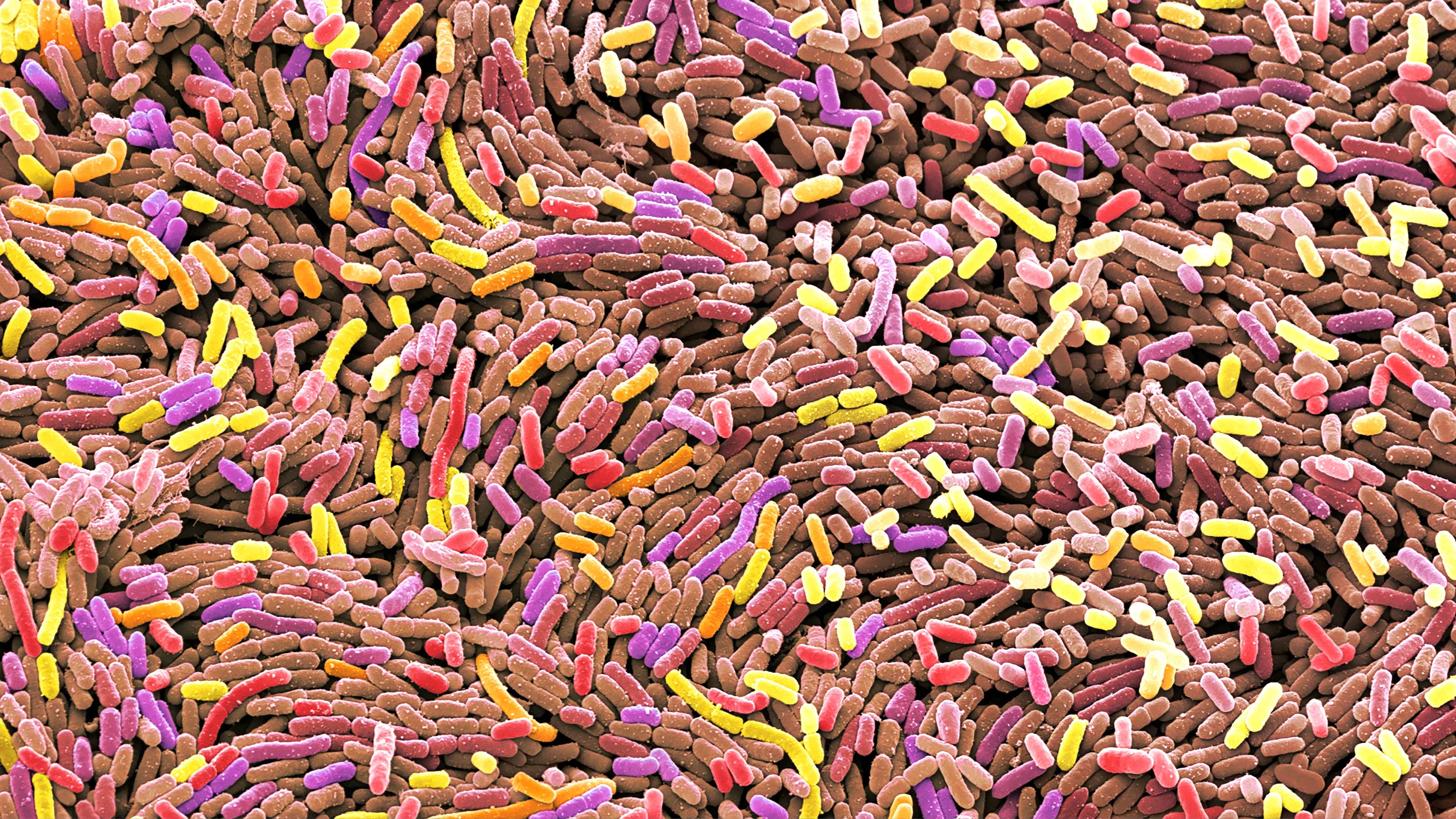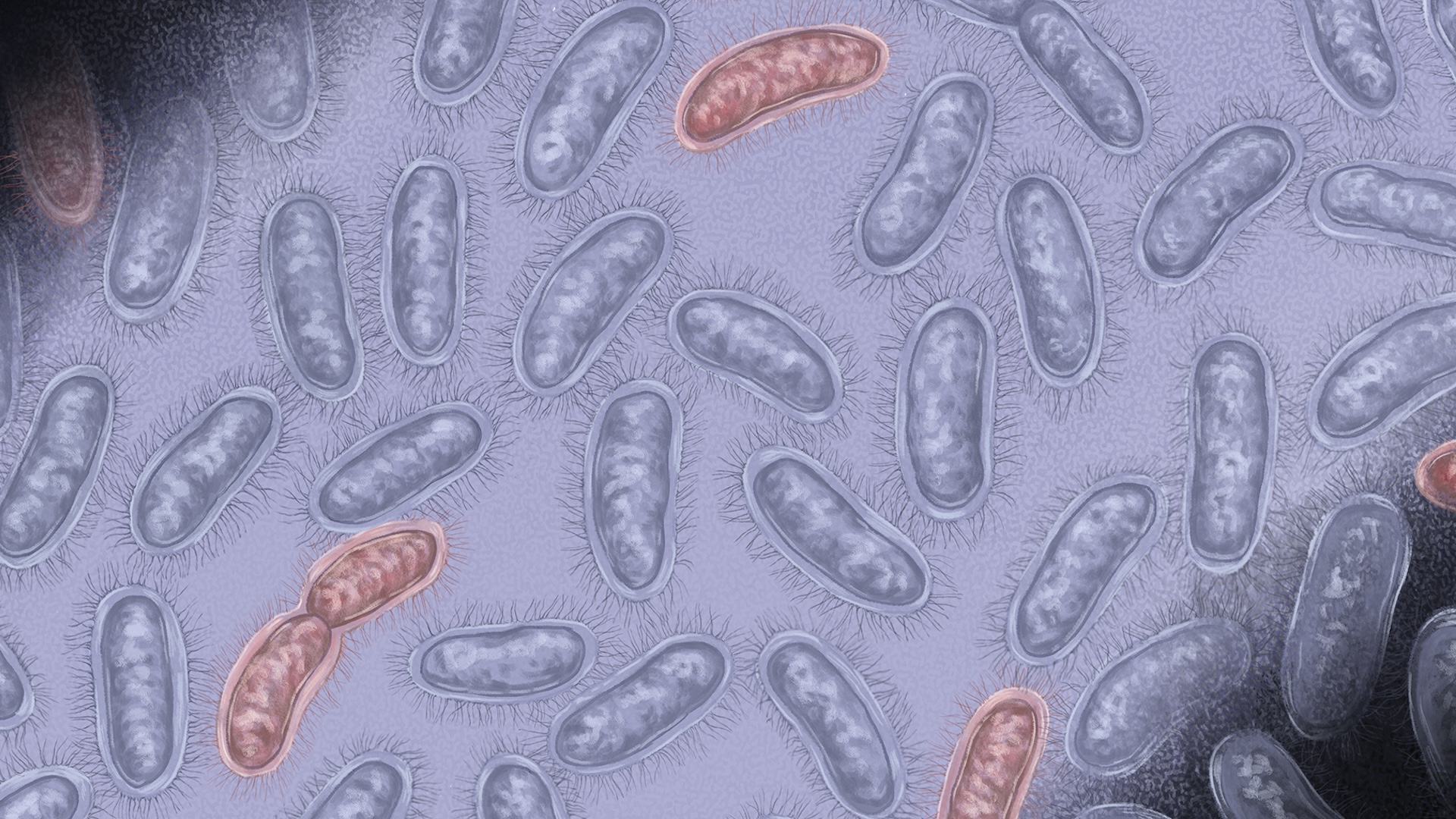How fast can antibiotic resistance evolve?
Bacteria can mutate surprisingly fast to resist antibiotics.

Antibiotic resistance is one of the biggest global health challenges. Our most potent antibiotics become less effective as bacteria mutate and develop new defense strategies against these drugs. So, how fast can bacteria develop antibiotic resistance?
Although it depends on the species of bacteria and many other factors, "essentially it can be instantaneous to several days of evolution," Mark Blaskovich, a medicinal chemist and co-founder of the Centre for Superbug Solutions at The University of Queensland in Australia, told Live Science. "Selection pressure that leads to new mutations that are able to provide resistance can happen in one generation, or at the point of doubling."
Some bacteria, such as Escherichia coli, could divide or double every 20 minutes. Because they reproduce so rapidly, they tend to pass on more genetic changes during each doubling compared with more complex organisms, such as humans, whose cells divide roughly every 24 hours. That means that a mutation that helps the bacteria evade antibiotics can be passed on to their offspring or others in the population in that amount of time, Blaskovich said.
The likelihood of developing antibiotic resistance also depends on the type of bacteria and antibiotics. Many antibiotics need to enter the cells to be effective. Because of that, Gram-negative bacteria, which have an outer cell membrane, tend to be more resistant than Gram-positive bacteria thanks to the added layer of protection.
In 2016, researchers at the Technion-Israel Institute of Technology and Harvard Medical School filled a table-sized petri dish with E. coli bacteria and the antibiotic trimethoprim, which normally kills bacteria that cause urinary tract infections. They divided the massive petri dish into nine sections, with antibiotic concentrations in each section ranging between zero and 1,000 times the lethal dose for E. coli.
Related: Dangerous 'superbugs' are a growing threat, and antibiotics can't stop their rise. What can?
The scientists found that in just 11 days, the entire population had acquired mutations that made it resistant to even the highest antibiotic concentration tested in the experiment.
Sign up for the Live Science daily newsletter now
Get the world’s most fascinating discoveries delivered straight to your inbox.
But this is at the population level, Blaskovich noted. With a study like this, "you're missing out on the nuances of what's going on within individual cells within that population," he said.
What's more, when antibiotics fail in the clinic, it's typically because of the growth of bacteria that already have resistance genes, as opposed to bacteria evolving new antibiotic resistance mutations over the course of treatment, Blaskovich said. So, in real patients, it could take even less time for a population of bacteria to become resistant than it did in the petri dish experiment, he said.
Occasionally, a small number of bacteria may survive antibiotics better than the others in the population. These "fitter" bacteria likely grow better than the rest of the population.
There are four common ways bacteria can acquire antibiotic resistance: by modifying their cell walls to stop antibiotics from entering cells, by pumping antibiotics out of cells, by changing the bacterial protein that the antibiotic targets, and by producing enzymes that disable the antibiotic.

Read more:
—10 of the deadliest superbugs that scientists are worried about
—What's the difference between gram-positive and gram-negative bacteria?
Each of these mechanisms takes a different amount of time to evolve, Blaskovich said. For example, antibiotics that bind to a bacterial target controlled by a single gene could potentially fuel rapid mutation, especially when the mutation does not interfere with the organism's internal function. On the other hand, if resisting the antibiotic requires changes that inhibit critical functions in the bacteria, resistance could take much longer to emerge.
One way scientists and clinicians are overcoming antibiotic resistance is by using a combination of drugs with different mechanisms of action. In this way, each antibiotic will have less influence on the evolution of a particular resistance mechanism.
"Over the last 20 to 30 years, we're getting a better understanding of the properties that allow antibiotics to penetrate inside of bacteria," Blaskovich said. "The biggest roadblock, really, to antibiotic development is just the lack of people doing it."

Kristel is a science writer based in the U.S. with a doctorate in chemistry from the University of New South Wales, Australia. She holds a master's degree in science communication from the University of California, Santa Cruz. Her work has appeared in Drug Discovery News, Science, Eos and Mongabay, among other outlets. She received the 2022 Eric and Wendy Schmidt Awards for Excellence in Science Communications.
Flu: Facts about seasonal influenza and bird flu
What is hantavirus? The rare but deadly respiratory illness spread by rodents











